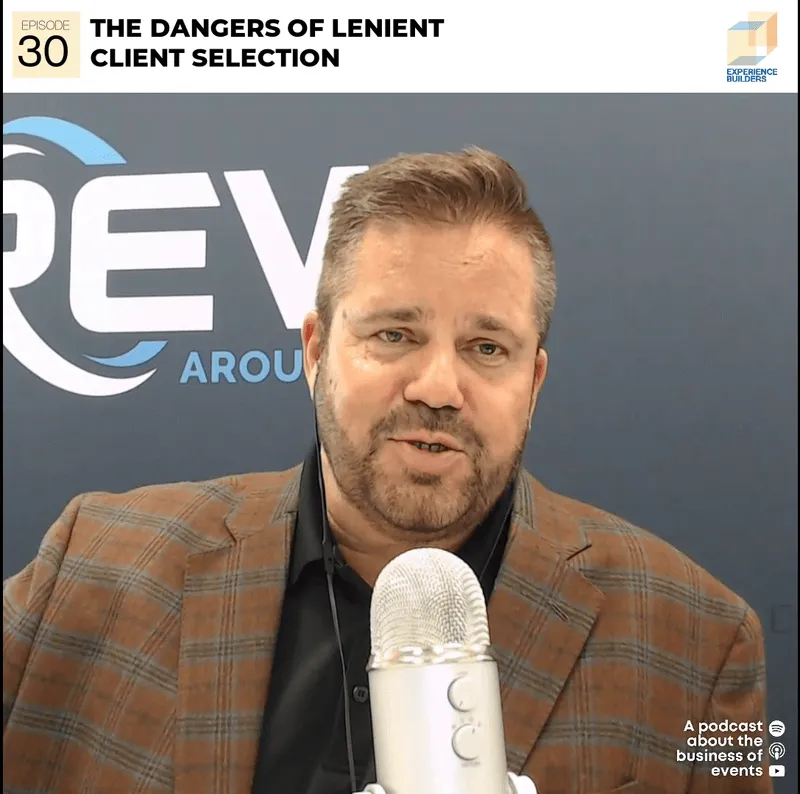
I get excited over the request for proposal (RFP) process. Since my life is 24/7 sales, every contact with a prospect or existing client is an opportunity to show them that what I’m providing is better than any of my competitors’ offerings. It’s definitely an opportunity to expose a competitor’s weakness and put the advantage in my corner.
Sadly, this is not how all AEs in the exhibit marketing space view RFPs. They don’t see it as an opportunity to showcase their strengths. I’ve even heard former co-workers refer to RFPs as “Ranting From Purchasing,” “Release of False Pricing,” and the worst being, “Royal F@%’ing Pain.” Although this makes for good water cooler talk and lunch room laughs, it shows a lack of respect and disregard for all the hard work our clients go through to improve their exhibit marketing efforts.
Top account executives view the RFP process as a way to introduce new and exciting offerings in conjunction with a solid, healthy base of business offerings already provided. This is the opportunity to further differentiate your exhibit company from the 95 percent of companies that use duplicated templates in this exciting process. If your exhibit company isn’t getting better every year, you can’t expect your clients to better their presence at tradeshows either.
From a client’s viewpoint, what they are purchasing is an expensive, custom advertising tool created just for them. If you, as an exhibit company, are going to approach the process with a formatted and mundane approach, you are missing the point of the word “custom.” This is the opportunity to expose the weaknesses that most competitors have.
The best approach to starting the RFP process is to look at history. The best way to start this is to have a meeting or conference call with your clients after every major show. It’s another touch point and puts you in front of clients or prospects. If you can’t arrange the meeting or call, writing from a marketing perspective is your best approach.
When answering their RFP inquiries, always keep in mind that you are there to help your client sell their product, not your exhibit. As exhibit builders, we tend to focus on the quality of our exhibits. While quality is important, the focus should always be about your client’s corporate identity and product focus. Unfortunately, when we focus on exhibit elements over a client’s corporate identity, we are fostering the long time image of tradeshows as the “step child of marketing.” This process, and following through on our promises, puts our companies on a much higher level when we’re competing for marketing budgets.
After corporate identity, you can focus on functionality of design. Positioning corporate identity across the aisle from your client’s competitors, storage areas, and lighting come into play here. Functionality, just like exhibit quality, should be automatic. Clients expect this.
RFPs tend to focus on the past and present. This is an opportunity for your exhibit company to stand out by focusing on the future. Throughout the RFP, respond that post-show performance reviews and cost summaries are just part of what you do. This post-show review process gives you a chance to learn from any incidents that occurred on the show floor and also provides an opportunity to begin planning for the next event. Remember, it’s all about the future.
So many of my counterpart AEs are insecure. This is unfortunate. They want to be the only point of contact within a company because they don’t want anyone “stealing” the client away from them. This is so limiting for clients and shelters the true capabilities and potential of your exhibit company. What I recommend, and something I practice, is to make every department part of the RFP process. That way, a client can reach somebody on the account team any day and any time. Give them 24/7 accessibility. Giving a client a contact in, for example, Design allows them to provide valuable input and become part of the process. Our company becomes a direct extension of their marketing department. Why would they ever leave?
Lastly, be completely honest with your clients and prospects. I would estimate that more than half the exhibit companies put false pricing and capabilities into an RFP. This is an opportunity to educate your client on the intentions of your competitors. Inform them that they shouldn’t look at an hourly rate and derive value from it. I’ve heard competitors say that they always put in a lower hourly rate because when designing and estimating, the client never asks how many hours it takes. That part of the equation is never included in an RFP because of the “custom” aspect of our business. When you’re honest with your clients, they tend to not argue as much about invoices, which improves my working relationship with the Accounting Department.
To Summarize, the Top Five Focuses of an RFP should be:
1. Always keep your client’s corporate identity as the main focus
2. Functionality and quality of your products and services should be reinforced
3. Focus on the future, not the past or present
4. Provide multiple points of contact across all departments
5. Be honest. Then, you don’t have to remember anything.
Good Selling!
Joe Houle is Vice President of Strategic Development at LAB Exhibits. Joe is a sought after public speaker and is available for bookings. Please contact Joe at 708-305-0220 or at jhoule@lbexhibits.com.
| Home |
| People on the Move |
| National News |
| International News |
| Opinions |
| Tradeshow Calendar |































